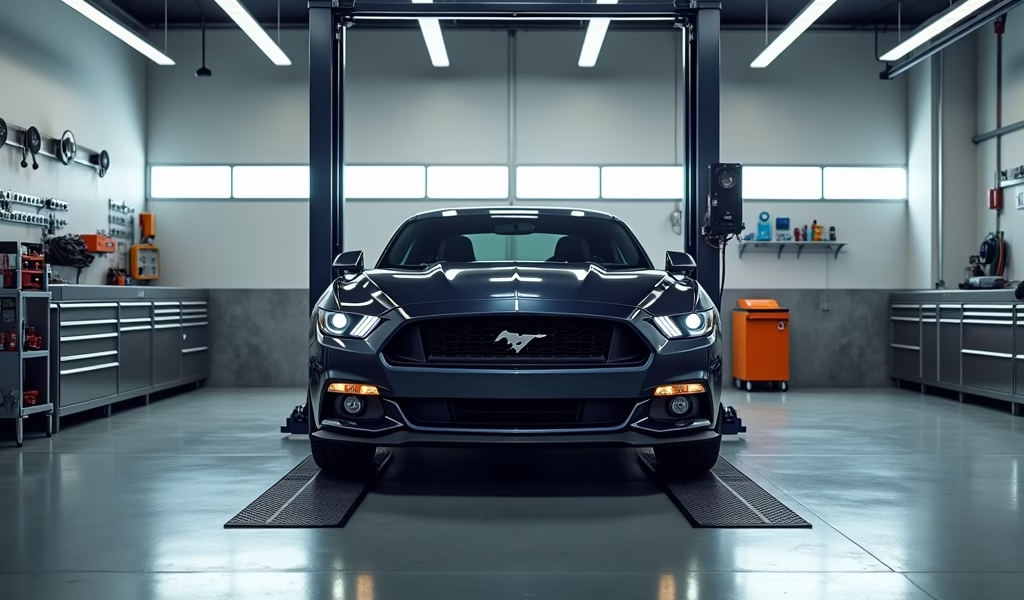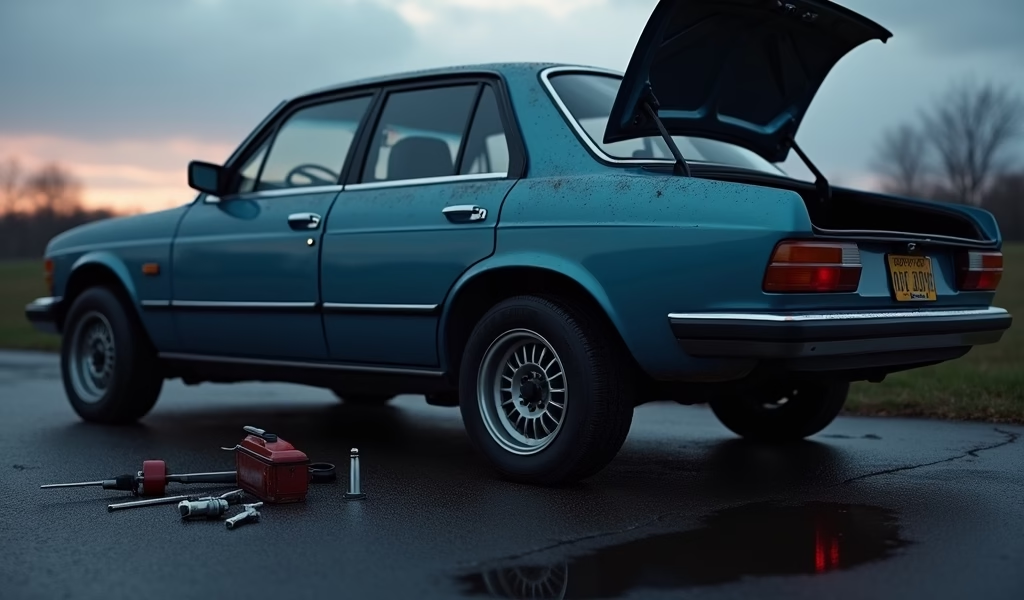Overview
This article presents seven practical car maintenance strategies to save money while protecting your vehicle investment, including DIY maintenance checks, proper washing techniques, fuel management, tire care, battery preservation, air filter maintenance, and keeping thorough documentation. By implementing these hacks, car owners can extend their vehicle’s lifespan, maintain higher resale value, and avoid costly repairs while managing their car loan payments more effectively.
Table of Contents
- Introduction
- Hack #1: DIY Regular Maintenance Checks
- Hack #2: Strategic Washing and Waxing
- Hack #3: Smart Fuel Management
- Hack #4: Extending Tire Life
- Hack #5: Battery Maintenance and Preservation
- Hack #6: Air Filter Care
- Hack #7: Documentation and Warranty Management
- Conclusion
- Frequently Asked Questions
Introduction
That intoxicating new car smell—it’s practically worth the price of admission all by itself! Whether you’ve just driven off the lot with your shiny new ride courtesy of a pre-approved car loan or you’re still rolling in your trusty old jalopy, proper maintenance isn’t just smart—it’s your financial lifeline.
Think of your car like a temperamental toddler—neglect it for a hot minute, and boy, will you pay for it later! I’ve spent 20+ years with my hands covered in engine grease, and let me tell you, the difference between a well-maintained vehicle and a neglected one isn’t just about performance—it’s about cold, hard cash staying in your wallet.
With those pre-approved car loan payments marching out of your bank account every month like clockwork, keeping your four-wheeled investment running smoothly isn’t just satisfying—it’s essential. After all, nobody wants to be making payments on a car that’s spending more time in the shop than on the road!
So buckle up, friends! I’m about to take you on a rubber-burning journey through seven money-saving maintenance hacks that will keep your ride purring like a kitten and your bank account from having a meltdown. These aren’t just any tips—they’re the holy grail of auto care that I share with my most valued customers at the shop.
Hack #1: DIY Regular Maintenance Checks
Listen up, folks—you don’t need to be a certified gearhead to keep your chariot in fighting form! Some of the most critical maintenance checks are so simple a sleepy teenager could handle them (though whether they would is another story entirely).
First things first: fluids are the lifeblood of your vehicle. Checking your oil is easier than making that fancy pour-over coffee you’ve gotten hooked on. With the engine cool, pull the dipstick, wipe it clean (old t-shirts work great here), reinsert it, and pull it out again. Is the oil level between the minimum and maximum marks? Great! Is it the color of maple syrup? Even better! If it’s black as midnight and lower than your ex’s standards, you’re courting disaster.
Coolant levels are equally critical—especially if you don’t fancy being stranded on the roadside with steam billowing from under your hood like a locomotive. Most modern cars have a transparent coolant reservoir that makes checking levels a breeze. Just make sure the engine is COLD before you even think about opening that radiator cap, unless you enjoy first-degree burns as a hobby.
Tire pressure might seem like small potatoes, but let me tell you—it’s the unsung hero of fuel economy and safety. Driving with underinflated tires is like trying to run a marathon in snow boots—inefficient and downright dangerous. Most gas stations offer free air, and a quality tire pressure gauge costs less than your fancy coffee habit for a single day.
The beauty of DIY checks? They transform potential four-figure repair bills into maintenance tasks that cost pennies. That’s music to the ears of anyone with a pre-approved car loan to pay off!
Hack #2: Strategic Washing and Waxing

“It’ll rain tomorrow—why bother washing it?” Oh boy, if I had a nickel for every time I’ve heard that whopper! Let me set the record straight: rain is about as effective at cleaning your car as a chocolate teapot is at brewing tea.
Rain doesn’t just fail to clean—it actively deposits contaminants on your paint. That innocent-looking rainwater is carrying pollutants, acid, and particulates that will eat through your clear coat faster than termites through balsa wood. Don’t believe me? Check out vehicles in rain-heavy regions without regular washes—they look like they’ve been through a sandblaster!
Washing your ride at home isn’t just therapeutic—it’s economical. Skip those automated car washes that slap your paint around like a heavyweight boxing match. Instead, grab two buckets (one for soapy water, one for rinsing), car-specific soap (dish soap is the devil’s work on car paint!), and some microfiber cloths.
The secret sauce? Waxing. It’s not just for show-offs and car enthusiasts—it’s your paint’s personal bodyguard. A good wax creates an invisible shield against UV rays, bird bombs (those feathered fiends!), and environmental contaminants. Apply a quality wax every three months, and your paint will stay showroom-fresh years longer than your neighbor’s neglected sedan.
Interior care deserves just as much attention as exterior. Vacuum regularly and wipe down surfaces with appropriate cleaners. Those french fries that slipped between seats? They’re not just feeding rodents—they’re degrading your interior materials. A clean cabin not only makes for a more pleasant driving experience but can add hundreds to your resale value when it’s time to upgrade.
Hack #3: Smart Fuel Management
Let’s talk fuel—the liquid gold that powers your chariot and empties your wallet faster than a teenager with your credit card at the mall. With gas prices jumping around more than a cat on a hot tin roof, smart fuel management isn’t just nice—it’s necessary!
First off, your driving style has a bigger impact on fuel economy than most folks realize. Punching the accelerator like you’re auditioning for Fast & Furious might feel exhilarating, but it’s the equivalent of setting fire to dollar bills. Gradual acceleration and maintaining steady speeds can improve your fuel economy by up to 30%—that’s like getting a free tank of gas every month!
Technology is your best friend in the quest for cheaper fill-ups. Apps like GasBuddy or Waze can guide you to the cheapest gas in your area. The difference between stations can be as much as 50 cents per gallon—multiply that by your tank size and you’re talking real money, folks!
And for the love of all things mechanical, please check your owner’s manual before pumping premium fuel into a vehicle designed for regular. Unless your engine specifically requires high-octane fuel, you’re literally pouring money down the drain. Modern engines with knock sensors will adjust timing for regular gas without throwing a tantrum.
Remember that roof rack you never use? It’s creating drag that’s costing you about 5% in fuel efficiency. And that trunk full of “just in case” items? Every 100 pounds of unnecessary weight reduces your MPG by about 1%. Clean out your car like you’re preparing for buying a new car, and watch your fuel economy improve!
Hack #4: Extending Tire Life
Tires—those rubber doughnuts that connect your pride and joy to the asphalt—are among the most expensive recurring costs of vehicle ownership. A full set can set you back anywhere from $400 to $1,200 depending on your ride, making tire longevity a hot topic for anyone with a pre-approved car loan payment to manage.
Rotation isn’t just a dance move—it’s the secret sauce of tire longevity. Front tires typically wear differently than rear tires (especially in front-wheel-drive vehicles where they’re doing all the heavy lifting). By rotating them every 5,000-7,000 miles, you’re ensuring even wear patterns and extracting maximum mileage from your rubber.
Alignment is tire life’s unsung hero. Hit one pothole too many, and your wheels can go cattywampus faster than a toddler’s block tower. Signs of alignment issues include uneven tire wear (especially on the edges) and your vehicle pulling to one side like it’s got a vendetta against the shoulder. A proper alignment costs around $100 but can save you hundreds in premature tire replacement.
Pressure checks should be as routine as brushing your teeth (though hopefully not as frequent). Underinflated tires flex more, generating heat and accelerating wear on the outer edges. Overinflated tires bulge in the middle, wearing out the center tread prematurely. Either way, you’re throwing money down the drain. The correct pressure (listed on that sticker in your driver’s door jamb—not the maximum PSI on the tire itself!) is the golden ticket to maximum tire life.
When the time does come for replacement (and it will), don’t cheap out on quality, but do shop around. Tire prices can vary wildly between retailers, and many shops offer price matching. According to Consumer Reports’ tire research, the best value isn’t always the cheapest upfront cost—factor in treadwear ratings for cost-per-mile calculations.
Hack #5: Battery Maintenance and Preservation
Nothing ruins your morning faster than the click-click-click of a dead battery. It’s like your car is laughing at you while you frantically check the time, knowing you’ll be late for that important meeting. But here’s the kicker—most battery failures aren’t sudden; they’re the result of neglect sneakier than a cat on carpet.
Battery terminals collect corrosion like my workshop collects coffee mugs—quickly and mysteriously. That white, crusty buildup isn’t just unsightly—it’s creating resistance that’s forcing your battery to work harder than a one-legged man in a kickboxing competition. Cleaning terminals is ridiculously simple: disconnect the battery (negative terminal first, always!), mix baking soda with water, scrub with an old toothbrush, rinse, dry thoroughly, and reconnect (positive first this time). A thin coat of petroleum jelly or terminal protector spray will keep corrosion at bay longer than a restraining order.
Parasitic drains are the vampires of the automotive world—silently sucking the life from your battery when you’re not looking. Common culprits include glove compartment lights that don’t shut off completely, aftermarket accessories wired directly to the battery, and faulty electronic modules. If your battery keeps dying despite being relatively new, have a mechanic perform a draw test to identify the energy thief.
Heat is a battery’s mortal enemy—it accelerates internal breakdown faster than a political discussion at Thanksgiving dinner. If you live in a scorching climate and park outside, your battery’s lifespan could be half that of a garage-kept vehicle in a moderate climate. Can’t garage your ride? Consider a heat shield for your battery—it’s cheaper than premature replacements.
Hack #6: Air Filter Care

Your engine gulps down about 10,000 gallons of air for every gallon of fuel it burns—that’s more air than a politician uses during a filibuster! All that air needs to be cleaned before it enters your engine, or you’ll be looking at damage more expensive than a weekend in Vegas.
Checking your air filter is monkey-simple and takes less time than brewing coffee. Pop open your hood, locate the air filter housing (usually a black plastic box with clips or screws), and take a gander at that filter. If it looks dirtier than a muddy boot, it’s replacement time. Hold it up to a light source—if you can’t see light passing through, it’s toast.
Here’s where the savings kick in—a new air filter costs around $15-30, but replacing a clogged one can improve fuel efficiency by up to 10%. That’s like getting a discount on every gallon of gas you buy! And if you’re thinking, “I’ll just have the dealer change it during service,” prepare to pay 2-3 times more than doing it yourself.
Frequency depends on your driving conditions more than mileage. Drive on dusty country roads? Check every three months. City dweller with clean highways? Every six months should suffice. Your owner’s manual (that book collecting dust in your glove compartment) has the manufacturer’s recommendations for your specific vehicle.
Don’t forget about your cabin air filter too—it’s the unsung hero keeping pollen, dust, and that mysterious smell from the farm you passed out of your interior. Most cabin filters hide behind the glove box and can be replaced in minutes. Your sinuses will thank you, especially if you’re one of the 25 million Americans with asthma.
Hack #7: Documentation and Warranty Management
Paperwork—about as exciting as watching paint dry, but possibly the most valuable hack on this list for protecting your investment and that pre-approved car loan you worked so hard to secure.
Service records aren’t just for type-A personalities and obsessive collectors—they’re solid gold when it comes time to sell or trade in your vehicle. A documented maintenance history can add hundreds, even thousands, to your car’s resale value. Potential buyers love seeing proof that the vehicle was pampered more than a Persian cat.
Create a simple system—whether it’s a dedicated folder in your file cabinet, a digital folder on your computer, or an app like Car Minder. Record every service with date, mileage, what was done, and who did it. Keep those receipts like they’re winning lottery tickets!
Warranty management is where many owners drop the ball harder than a toddler with fine china. Do you know exactly what’s covered under your manufacturer’s warranty? How about that extended warranty you purchased with your pre-approved car loan? Many owners pay for repairs that should have been covered simply because they didn’t realize certain components were under warranty.
Create a simple document listing all warranties, what they cover, expiration dates (both time and mileage), and contact information for claims. Keep copies of this document both in your vehicle and at home. When something goes wrong, you’ll know immediately whether to pull out your warranty card or your credit card.
Warranty records also come in handy when considering car buyer guides for your next vehicle purchase. If certain components consistently failed under warranty, you might think twice about that manufacturer next time around.
Conclusion
There you have it, folks—seven money-saving maintenance hacks that’ll keep your ride running smoother than a freshly paved highway and your wallet fatter than a well-fed cat! These aren’t just random tips—they’re battle-tested strategies from decades in the trenches of automotive repair.
With your pre-approved car loan payments steadily chipping away at your debt, the last thing you need is preventable repair costs throwing a wrench in your financial gears. Each of these hacks represents a small investment of time and attention that pays massive dividends over your vehicle’s lifetime.
Remember, cars aren’t just transportation—they’re one of the largest investments most of us make outside of housing. Treating yours like the valuable asset it is ensures you’ll extract maximum value from every dollar of that pre-approved car loan.
So go forth and implement these tips! Your future self (and your bank account) will thank you when your car is still running like a dream long after the loan is paid off. After all, the sweetest drive is the one in a paid-off vehicle with many reliable miles still ahead!
Frequently Asked Questions
What is a pre-approved car loan?
A pre-approved car loan is financing that’s been approved before you shop for a vehicle. It gives you a clear budget and stronger negotiating position at the dealership.
How does a pre-approved car loan affect my car buying power?
A pre-approved loan sets a clear spending limit and often comes with better interest rates than dealer financing. You’ll shop with confidence knowing exactly what you can afford.
Can I get a pre-approved car loan with bad credit?
Yes, though interest rates may be higher. Many lenders offer pre-approved loans for various credit scores, but you’ll need to shop around for the best terms.
How long does pre-approval for a car loan last?
Most pre-approvals are valid for 30-60 days. If you don’t purchase within that window, you’ll need to reapply.
Should I tell the dealer I have a pre-approved loan?
Yes, but only after negotiating the vehicle’s price. Revealing your pre-approval too early might prevent the dealer from offering their best price on the vehicle.


Pingback: get pre approved for a car loan: 5 Tips! - knowsyourcar.com